The Cancer-Fighting Vegetables that Should be Top of your List!
December 11, 2012 | Author: Judith DeCava, CNC, LNC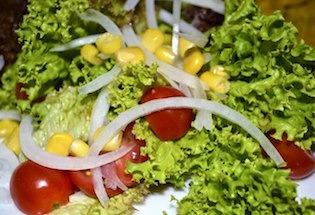
Cruciferous vegetables (broccoli, cabbage, cauliflower, brussels sprouts, kale, collards, watercress, mustard greens, and turnips) contain indoles, isothiocyanates, glucosinolates, and other compounds that may provide protection against various cancers.
The dark green crucifers, in particular, are rich in minerals such as calcium and magnesium, folate, and many other nutrients. One cup of chopped broccoli supplies the daily requirement of vitamin C, in addition to various carotenoids, niacinamide, thiamine, vitamin E, and lots of fiber.
Women over 60 who ate five servings each week of cruciferous vegetables tested a full one to two years younger in memory and mental sharpness than women who ate just two servings a week. These veggies have been credited with helping to prevent high blood pressure, heart disease and strokes. Broccoli, kale, swiss chard, and collards appear to fend off both macular degeneration and cataracts. Their phytonutrients can promote detoxification.
 To preserve nutrients, don’t overcook them. Steaming broccoli preserves about 90% of its phytochemicals versus 19% for boiling and 3% for microwaving.
To preserve nutrients, don’t overcook them. Steaming broccoli preserves about 90% of its phytochemicals versus 19% for boiling and 3% for microwaving.
Reared on iceberg lettuce, many Americans don’t know how nutritious and delicious greens can be. Apart from traditional nutrients like B vitamins, vitamin C, bioflavonoids, and calcium, there are numerous petrochemicals in greens. These substances protect your eyes, improve your skin, balance your cholesterol and blood pressure, raise the odds for keeping your mental edge, and help stave off cancer, among other benefits. Green vegetables are the food most missing from modern diets. They strengthen the blood and immune systems, prevent cancer and fight depression naturally. Greens can increase mental clarity and sustain energy. Some are great raw; others may be served cooked – but cook them quickly to preserve nutrients.
Kale is a nutritional superstar, loaded with calcium, potassium, cancer-fighting indoles, carotenoids, and other antioxidants. One cup of wilted collard greens provides over 9000 micrograms (meg) of beta-carotene and 266 milligrams (mg) of calcium.
 Spinach is rich in carotenes, folate, vitamin E, calcium, magnesium, and iron, to say nothing of its abundant potassium and vitamin K. Spinach contains high levels of quercetin (balances cholesterol) and lutein (over 12,000 meg in four cups packed raw or one-third cup cooked), which fortifies retinal cells, protects the prostate, blocks communication signals to cancer cells, and may help prevent heart disease and stroke.
Spinach is rich in carotenes, folate, vitamin E, calcium, magnesium, and iron, to say nothing of its abundant potassium and vitamin K. Spinach contains high levels of quercetin (balances cholesterol) and lutein (over 12,000 meg in four cups packed raw or one-third cup cooked), which fortifies retinal cells, protects the prostate, blocks communication signals to cancer cells, and may help prevent heart disease and stroke.
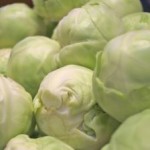 A one-cup serving of savoy cabbage contains a generous helping of folate and nearly double the amount of fiber found in other types of cabbage. The same sulfurous compounds in other cabbages are present, which may foil the replication of cancer cells.
A one-cup serving of savoy cabbage contains a generous helping of folate and nearly double the amount of fiber found in other types of cabbage. The same sulfurous compounds in other cabbages are present, which may foil the replication of cancer cells.
Watercress offers 960 mg of beta-carotene per cup, copious amounts of calcium, carotenes like lutein, and traces of omega-3 fatty acids. Watercress has a high amount of PEITC (phenylethylisothiocyanate) which appears to block cancer-causing chemicals, perhaps even protecting the lungs of smokers from carcinogens associate with tobacco.
Dark lettuce – when the plant is in the flowering stage – has calming properties and can assist in cases of insomnia. It also has a diuretic effect and a carminative effect (relieving flatulence and that full feeling when you eat too much), and can help lower blood sugar levels.
Purslane, often considered a pesky weed, boasts the richest known green vegetable cache of ALA, an omega-3 fatty acid. Omega-3s are vital to immune mechanisms, the cardiovascular system, nervous system, etc. Unlike other plant sources of omega-3s, purslane contains some EPA, the pre-formed type found in many fish, as well as vitamins A, C and E.
 Asparagus may help reduce exposure to pesticide residues on produce. Malathion is used on every plant from alfalfa to walnuts. One study showed that a one percent solution of asparagus and water (equivalent to eating 3 1/2 ounces of the vegetable) degraded the insecticide malathion to nondetectable levels in as little as 20 minutes. Because the “insecticide-fighting” ingredient is an enzyme, the heat of cooking deactivates it; therefore raw asparagus may be more effective. Nutritionally, asparagus is rich in folate, iron, carotenoids, and vitamin C.
Asparagus may help reduce exposure to pesticide residues on produce. Malathion is used on every plant from alfalfa to walnuts. One study showed that a one percent solution of asparagus and water (equivalent to eating 3 1/2 ounces of the vegetable) degraded the insecticide malathion to nondetectable levels in as little as 20 minutes. Because the “insecticide-fighting” ingredient is an enzyme, the heat of cooking deactivates it; therefore raw asparagus may be more effective. Nutritionally, asparagus is rich in folate, iron, carotenoids, and vitamin C.
Other vegetables, though not rich in chlorophyll, are dense in other nutrients that have many protective qualities. Onions, for example, may help prevent osteoporosis. In animal studies, onions help decrease bone loss by preventing the loss of bone-building minerals. Onions with the boldest taste contain the highest antioxidant activity and appear to be the most effective in inhibiting the growth of cancers such as colon and liver cancer. Shallots and strong onions boast the most powerful antioxidant profile, while more mild varieties lag far behind in potency.
Beets are a good source of betaine and help keep bile the right consistency, aiding liver detoxification. Betalain, an antioxidant in beets, stimulates the productions of enzymes that slow some risks associated with aging, including cancer and cardiovascular disease.
Turnips contain the same sulfurous components of other cruciferous vegetables, along with vitamin C. Turnip greens are especially nutritious, with plenty of carotenes and vitamin C, as well as riboflavin, calcium, and iron. Of all root vegetables, rutabagas are the best source of vitamin C complex.
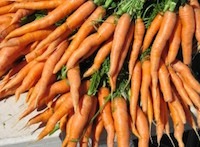 Carrots are one of the best sources of beta-carotene, a precursor of vitamin A and one of the best cancer-fighting vegetables. Levels of carotenes and other antioxidants are higher when the carrots are not peeled. Carrots offer some lutein, vitamin C, and potassium. They are a storehouse of fiber and a source of the trace mineral silicon, which helps strengthen connective tissue and aids calcium metabolism. Parsnips, a relative of the carrot, provide vitamin C, folate, and potassium.
Carrots are one of the best sources of beta-carotene, a precursor of vitamin A and one of the best cancer-fighting vegetables. Levels of carotenes and other antioxidants are higher when the carrots are not peeled. Carrots offer some lutein, vitamin C, and potassium. They are a storehouse of fiber and a source of the trace mineral silicon, which helps strengthen connective tissue and aids calcium metabolism. Parsnips, a relative of the carrot, provide vitamin C, folate, and potassium.
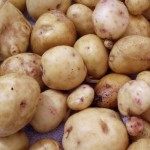 Raw potatoes are a valuable source of vitamin C complex and protein. Even when cooked, they are a beneficial source of potassium (407 mg in 2/3 cup diced or one-quarter of a large baked potato), niacinamide, and magnesium. Potatoes contain kukoamines, natural chemicals mat may reduce blood pressure. (These powers are depleted by baking and frying). Sweet potatoes are queen supreme for beta-carotene and other carotenoids; they also offer plenty of magnesium and potassium.
Raw potatoes are a valuable source of vitamin C complex and protein. Even when cooked, they are a beneficial source of potassium (407 mg in 2/3 cup diced or one-quarter of a large baked potato), niacinamide, and magnesium. Potatoes contain kukoamines, natural chemicals mat may reduce blood pressure. (These powers are depleted by baking and frying). Sweet potatoes are queen supreme for beta-carotene and other carotenoids; they also offer plenty of magnesium and potassium.
Among the summer squash family, zucchini gets a rave review for its lutein and potassium content. Beneath the thick skin of winter squash lies a bevy of nutrients, such as magnesium, calcium, folate, carotenes, B-vitamins, vitamin C complex, and various antioxidants. These high-fiber vegetables are packed with potassium too, which can lower high blood pressure. Butternut squash is loaded with beta-carotene: a cup has more than 100% of the RDA for vitamin A for women. A one-cup serving of acorn squash has 19% of the daily recommended amount of potassium and is rich in the B and C vitamins.
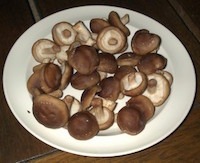 We often hear about the benefit of certain mushrooms regarding immune function and reduced cancer risk. But did you know that mushrooms also provide a hefty amount of the B vitamins niacinamide (about 4 mg in 1 1/2 cups chopped or 1/2 cup cooked – about eight button mushrooms) and riboflavin, which help cells turn food into energy? One serving can provide about 314 mg of potassium and is among the highest veggie sources (9 mg) of selenium — a free radical fighter. Mushrooms even contain vitamin D! Common mushrooms contain fibers that are good for the cardiovascular system, and they may be the top source of the antioxidant ergothioneine, containing 12 times as much as in wheat germ and four times as much as in chicken liver.
We often hear about the benefit of certain mushrooms regarding immune function and reduced cancer risk. But did you know that mushrooms also provide a hefty amount of the B vitamins niacinamide (about 4 mg in 1 1/2 cups chopped or 1/2 cup cooked – about eight button mushrooms) and riboflavin, which help cells turn food into energy? One serving can provide about 314 mg of potassium and is among the highest veggie sources (9 mg) of selenium — a free radical fighter. Mushrooms even contain vitamin D! Common mushrooms contain fibers that are good for the cardiovascular system, and they may be the top source of the antioxidant ergothioneine, containing 12 times as much as in wheat germ and four times as much as in chicken liver.
Fruits also have its unique cancer-fighting properties, find out by reading The Cancer-Fighting Fruits and its Cancer-Fighting Properties
Original Article: Immune Perspectives Vol. XI, no. 2 A PUBLICATION OF THE CENTER FOR ADVANCEMENT IN CANCER EDUCATION The Whole Food and Nothing But the Food by Judith DeCava, CNC, LNC[Adapted with permission from Nutrition News and Views, May/June 2006]
Join the conversation on the “Ask Holistic Cancer Coach Facebook Group.”
